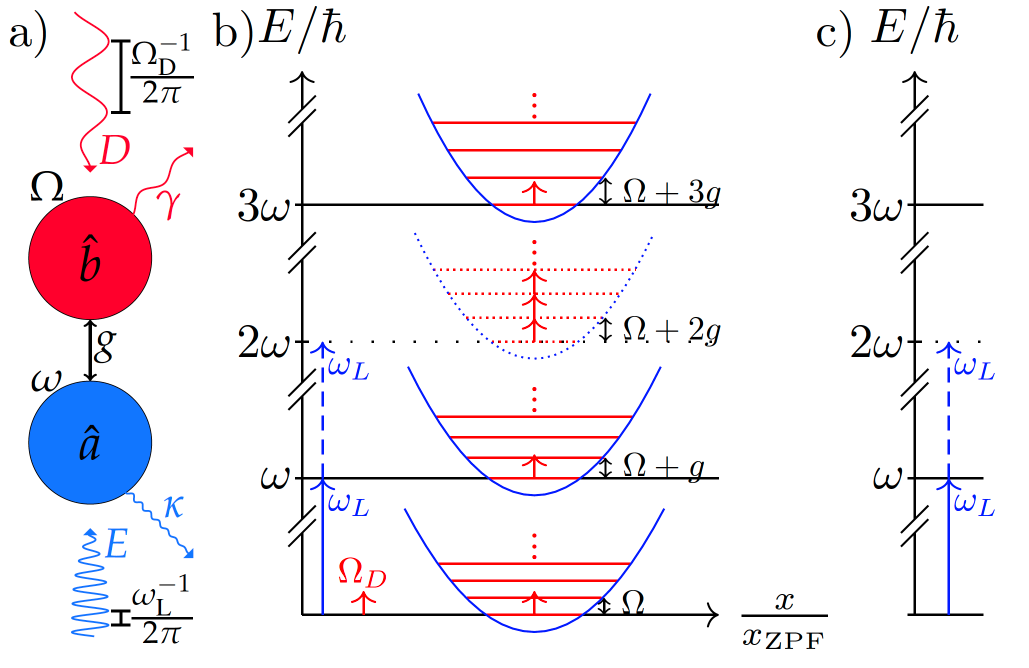Quantum Zeno Effect
Quantum Zeno dynamics in optomechanics
The basic idea in (Pelka & Xuereb, 2025) revolves around continuous observation.


Our visualisation of the quantum Zeno blockade.
We imagine an array of open bosonic quantum system, depicted in the left picture, that comes with specific energy levels. This makes them selectable and our suggested drive scheme achieves a Zeno effect. Effectively, a photon and phonon blockade are realised due to the clever driving scheme.

Our visualisation of the quantum Zeno blockade.
Moreover we found that this enables the creation of mechanical Fock states with a large fidelity.
